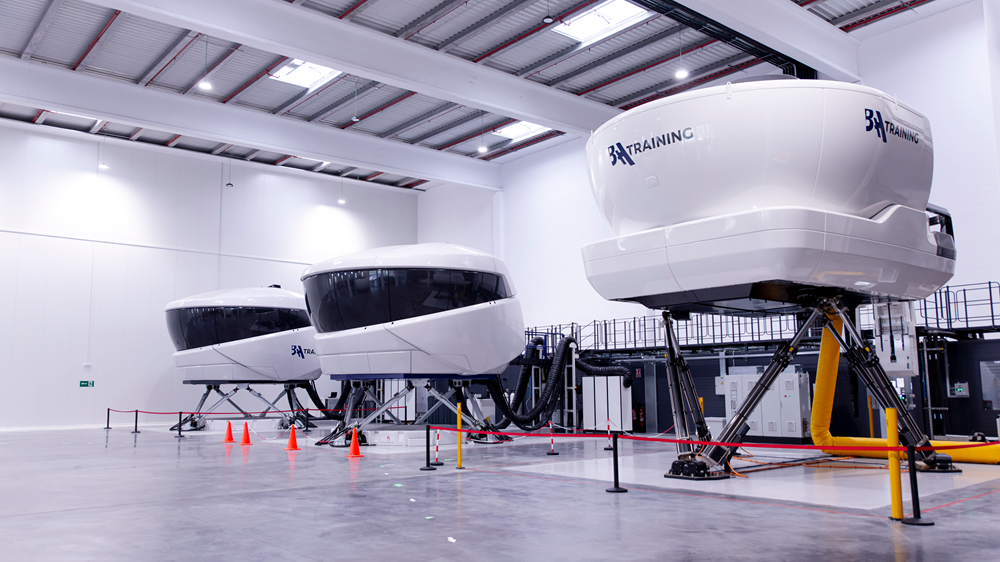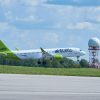 The summertime months and the changes they bring to aviation offer a unique opportunity to provide pilot training of the highest quality. Last summer, Eurocontrol reported a yearly high of 34,367 peak daily flights on July 7th, 2023, the high watermark for a regular flood of commercial airline traffic. This is also a peak time for BAA Training’s pilot academy to provide real-world flight time for its students in their careers in the airline industry. Omar Noureldin, Deputy Chief Flight Instructor at BAA Training, explains how they use summertime to enhance the student’s ability to ensure the safest operation of aircraft.
The summertime months and the changes they bring to aviation offer a unique opportunity to provide pilot training of the highest quality. Last summer, Eurocontrol reported a yearly high of 34,367 peak daily flights on July 7th, 2023, the high watermark for a regular flood of commercial airline traffic. This is also a peak time for BAA Training’s pilot academy to provide real-world flight time for its students in their careers in the airline industry. Omar Noureldin, Deputy Chief Flight Instructor at BAA Training, explains how they use summertime to enhance the student’s ability to ensure the safest operation of aircraft.
“Summer weather doesn't just bring passengers; it also brings changes to aircraft performance that enhance the student's understanding of flight,” Noureldin said. “Summer is the productive season for BAA Training Ab Initio.”
BAA Training’s Ab Initio flight academy training transitions aspiring pilots from zero experience to EASA-certified commercial pilots qualified to fly for the airline industry. During Ab Initio training, student pilots will operate light aircraft to rehearse fundamentals before proceeding to larger aircraft they will fly in their careers.
“There are noticeable differences between summer and winter performance during takeoff and landing,” Noureldin explained. “During hot summer days, the air density reduces, causing aircraft to lose performance, aerodynamic performance, and engine performance.”
Air density affects the forces of flight that allow an aircraft to move opposite the force of gravity. According to the equation for lift, denser summer air results in less lift produced by an aircraft's wings at any given speed.
“Less density in the air means fewer air particles to create lift,” Noureldin said. “The summer air and its effect increase the required takeoff distance and climb performance after takeoff.”
BAA Training utilizes the Cessna 172S Skyhawk as its primary trainer, offering a great learning environment for flight training.
During the summer months, student pilots can use the original equipment manufacturer (OEM) guides to practice calculating the weather's effect on the runway length required to fly safely at airports all over the world.
For this calculation, the location of BAA Training’s flight academy at Lleida–Alguaire Airport (ILD) in Spain enables the development of skills required to fly at airports worldwide. ILD’s runway is 2,500 m long (8,202 ft), which is generous for the single-engine Cessna 172S Skyhawk.
ILD’s elevation above sea level (350m) adds to the difference in aircraft performance in the summer months. At this altitude, the pilot’s operating handbook (POH) for the Cessna 172S lists performance calculations that replicate those made by complex computer systems used by airlines. While this makes things easier for the pilot, BAA Training students benefit from practicing using the aircraft’s POH. They learn that at ILD’s elevation, the takeoff distance for their aircraft increases by nearly 100 ft for every additional 10 degrees of temperature when the aircraft is at maximum takeoff weight.
Working through problems like this benefits pilot training as it prepares pilots to operate safely in a multitude of different airports in all weather conditions while mastering air density. In the United States, the National Oceanic and Atmospheric Administration (NOAA) reports that high-density altitude is related to nearly 7.3% of all aviation accidents, highlighting the value of summer training for aviation industry.
The change in climate during peak summertime can sometimes lead to extreme weather conditions. This is a valuable opportunity to teach students critical “go/no-go” decisions that are vital for airline operations. The same Eurocontrol report that noted record air travel last summer also indicates that extreme weather events during the summer months had a significant impact on the network, causing delays in aircraft schedules that were well beyond the desired levels.
“During summer, we can also expect frequent thunderstorms, especially during the early and late summer months,” Noureldin said. “Thunderstorms are a serious threat to any flight, and every missed flight in a training environment is an opportunity we use to teach safety.”
So, while the skies of Europe are filled with commercial jet traffic, summer conditions create numerous opportunities for flight training. In this regard, the training aircraft is similar to animals that migrate and change their behavior with the seasons, as summer conditions affect flight control, performance, and feel. While operating in these conditions presents challenges, BAA Training uses these challenges as opportunities to stress the importance of calculations and flight planning for every successful flight and subsequent landing.





